William Blake – Artist William Blake’s Paintings and Illustrations
The name William Blake comes up often in poetry circles, yet few people know that he was also an artist. William Blake’s paintings and poetry were rooted in the Romanticism movement, although his work was even regarded as eccentric by other Romanticists. William Blake’s artworks and poems were said to be inspired by visions and encounters with apparitions.
The Life of William Blake
| Nationality | English |
| Date of Birth | 28 November 1757 |
| Date of Death | 12 August 1827 |
| Place of Birth | London, United Kingdom |
| Style | Romanticism |
While many people know of William Blake today, he was largely ignored by his contemporaries and academics during his lifetime. Yet, he was regarded as a visionary by a small group of supportive patrons and peers. What did Blake paint? William Blake’s art represented a world experienced in his imagination, dreams, and visions; a fantastical reality very far removed from the life of poverty he suffered daily as a struggling artist.

Childhood
As a boy, William Blake often skipped school, preferring to spend his days making sketches of Greek artwork and reading poetry. He was born to a middle-class family and had a relatively normal childhood growing up in Soho. However, at around eight years of age, he started experiencing visions and told his family that there were angels in the trees outside his bedroom window.
While this concerned his parents, they recognized his artistic talent early on and enrolled him at the Henry Par Academy when he was 10 years of age.
Early Training
Although the academy was a highly respected institution, the fees were very high and Blake’s family struggled to make payments. Blake had to leave after four years at the academy and thereafter worked as an apprentice to the renowned engraver James Basire. Basire’s work would have a massive impact on William Blake’s illustrations, especially his sketches of Gothic buildings that he would produce on-site.
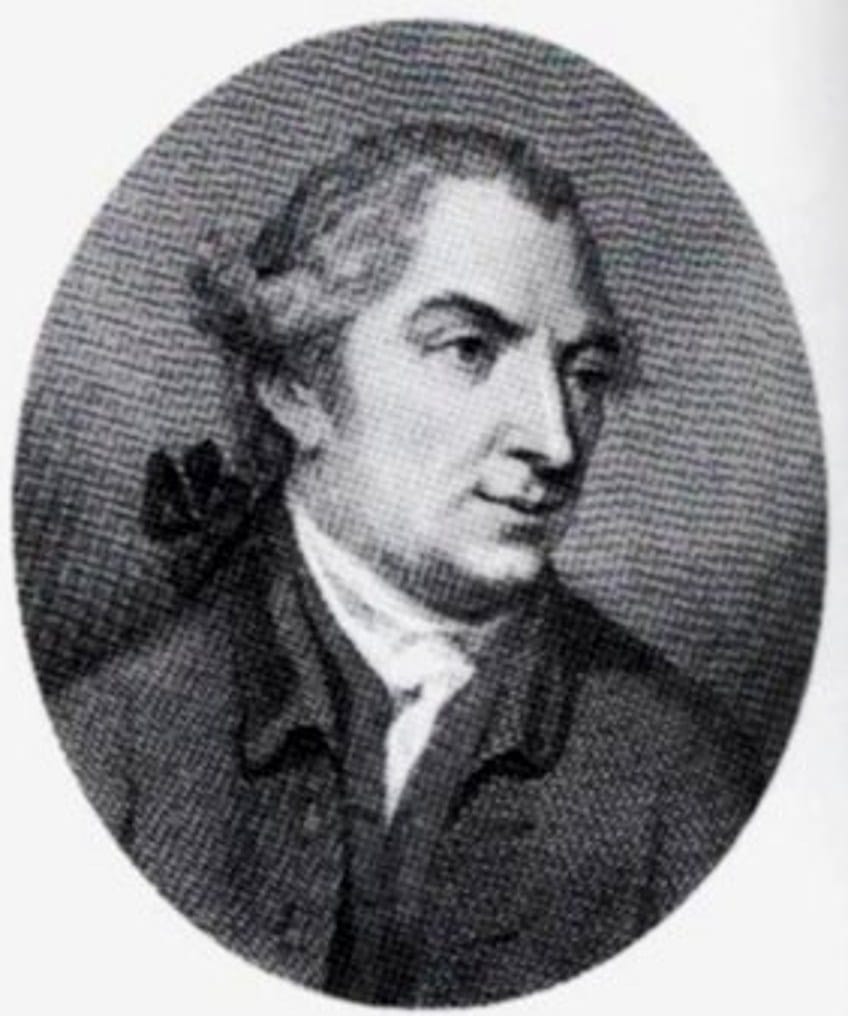
When not working as an apprentice, Blake would spend his time studying artworks from the Middle Ages and Renaissance periods, especially the works of Michelangelo, Raphael, and Albrecht Dürer. His apprenticeship ended when he was 21 years old and he then subsequently studied at the Royal Academy.
He would not study there for long, though, as he found the president of the Academy’s artistic principles to be stifling and unimaginative.
He then worked as an engraver for various commercial publications, yet he felt a calling to promote a renewal of interest in the Greeks arts. To Blake, the Greek arts were part of a lost tradition that connected spirituality and art. William Blake’s paintings were produced in the same manner as the ancient Greeks – guided by visions and mythology, yet despite claiming to be guided by angels, he never conformed to any official doctrine and never attended any church services.

In 1782, William Blake met Catherine Boucher, and the two got married after a brief courtship. They were a childless couple, so they were afforded free time in which Blake was able to teach his wife how to read and write, as well as how to draw. She would end up being a rather competent artist herself, often helping Blake with his work.
William Blake produced his first book of poetry, “Poetical Sketches”, in 1783, yet it was not a financial success.

His work as an engraver was steady though, and he was able to keep afloat by taking on engraving commissions. After his father passed away, Blake opened a workshop with his inheritance, along with his colleague James Parker.
In 1788, William Blake produced his pamphlet of poetic illustrations called There Is No Natural Religion, which was the first example of his “illuminated printing” technique. This method allowed him to combine both text and images within an engraving, enabling him to impart enlightened poems along with visionary artworks.
Robert, Blake’s brother, would also pass away during this time, and Blake, deeply impacted by his passing, started to tell people that his brother had started to visit and inspire him through visions.

Mature Period
The Large Color Prints series was created by Blake in 1795, in which he depicted characters from the scriptures, as well as Milton’s and Shakespeare’s works. Blake often mixed socially at various cultural gatherings around London town, but he was not necessarily an easy-going individual, and would often get into heated debates about his philosophies about his art and current trends. William Blake’s spiritual and political views were considered rather radical, and he had no desire to conform to society’s norms.
Blake also met Thomas Butts in 1795, an individual who would commission many of William Blake’s paintings, becoming his primary patron throughout this period.
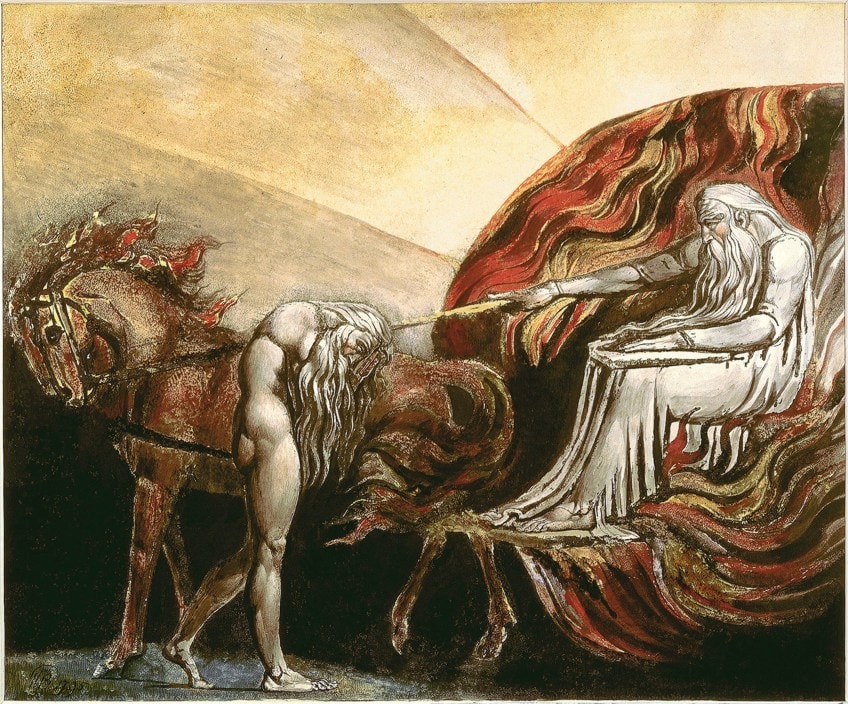
Butts gave Blake full creative control over the subject matter of his works, promising to buy whatever he chose to create. Blake was excited that he would receive a guinea for every small painting he created – and he had a commission for 50 of them! He would be allowed to express himself freely and not have to conform to another style or subject matter that did not interest him. However, he would not experience those same freedoms when he was commissioned by William Haley, the poet, in 1800 to produce some works at his country estate. Blake found the work extremely menial and frustrating and soon fell into a state of depression.
Blake felt like he was compromising his artistic integrity and the two poets could not see eye to eye – to such a degree that their friendship ended after a heated argument, after which Haley stated that Blake was his sworn enemy.
Engraving work began to dry up and finding work proved difficult, even though he was well known among London’s art circles. William Blake’s artworks were often regarded as outsider art by the establishment as he had not attended the Royal Academy like many of his peers and therefore did not get large public commissions. Blake resented that his works would never be publicly commissioned and stated that perhaps he should create mobile frescoes so that he could expose his works to an audience that seemed “visionless”.

William Blake’s apparent visions and visitations were not well received by the public either, with many assuming that he was simply going insane after he started to assert that Master artists such as Michelangelo had visited him in visions and imparted advice to him. He was a proud and somewhat egotistical figure, perhaps too aware of his own talents, often telling his patrons that his work was of the same quality as those of Rafael and others.
He became an increasingly solitary figure due to his erratic behavior and strange beliefs, yet he continued to produce consistently, driven by his belief in the miraculous powers of imagination and faith.
William Blake’s illustrations portrayed reality as he perceived it, and believed reality was a construct of the imagination anyway, and that it would differ vastly from one individual to another. He regularly stated that he was visited and guided by Archangels and divine figures such as the Virgin Mary. This would lead to Blake being dismissed as mad, and despite his obvious talents, he never reached the same heights as the men around him who had none of his artistic ability.
Later Work
William Blake very seldom left the town in which he was born throughout his whole life, yet his love for art meant he had acquired many classical art prints from around the world and was a very cultured man despite his lack of worldliness. Unfortunately, he would end up selling most of his collection during a particularly difficult financial period in his life. His luck would change in 1818 when he encountered the person who would become another substantial patron of his artworks, John Linnell.
Many of William Blake’s artworks from his later period were commissioned by Linnell, who also bought many of William Blake’s paintings that had already been produced.
Linnell would also introduce him to the Ancients, a group of artists that were all admirers of William Blake’s paintings and had been drawn together by their shared appreciation of his works. They shared the same philosophical views on life and the universe, and Blake suddenly found himself going from a stage of relative obscurity to being revered as some sort of prophet or leader figure. Samuel Palmer, the member of the Ancients that displayed the most artistic ability, would be regarded as the artist who most embodied Blake’s style and aesthetic.

William Blake then moved to the Strand in 1820, staying in a small room where he passed his days making engravings. In 1821 Linnell commissioned him to create illustrations of the Book of Job. Blake was by this time in his mid-60s, yet those around him remarked that he was still full of energy and ideas. He would work straight up to the day he died just five years later, engaged in what is now regarded as among his most important works, Dante’s Divine Comedy (1824). A few short hours before he passed, he was still drawing angels and using his wife as a model.
Although beloved by the Ancients, he died in relative poverty and obscurity, having sold no more than 20 copies of his publications in several decades.
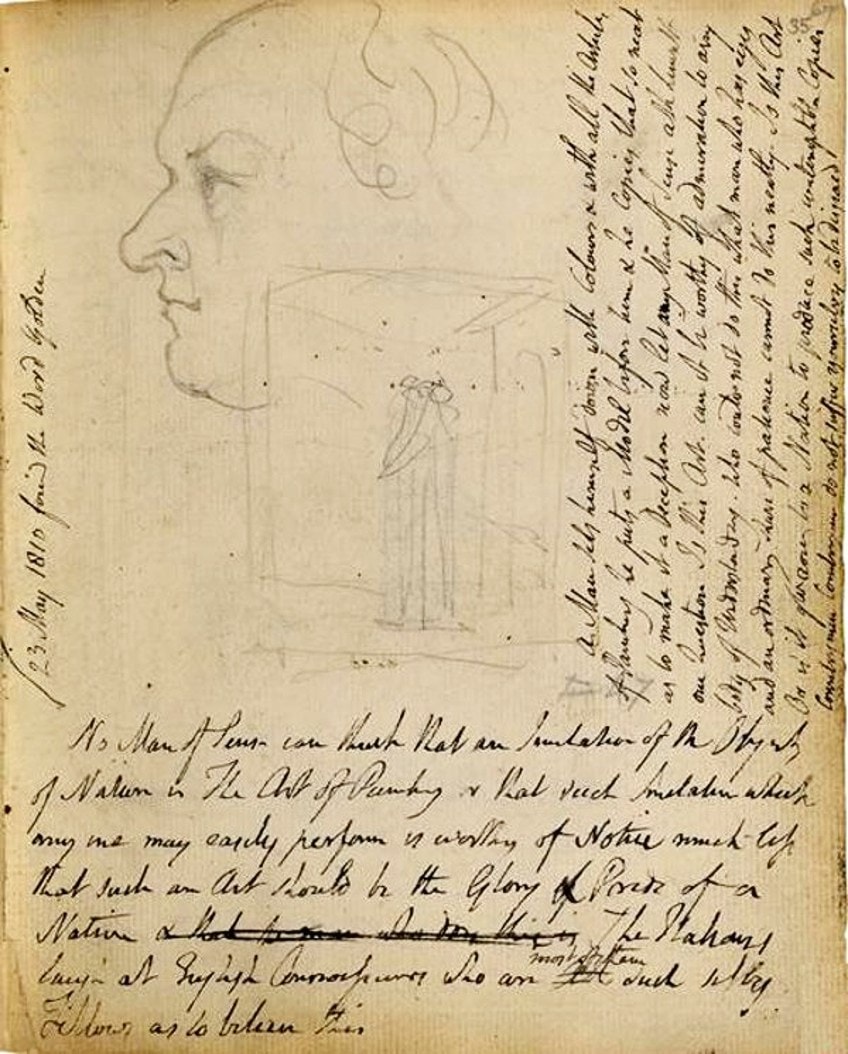
Legacy
William Blake’s paintings and poetry were largely forgotten and ignored by an entire generation following his death until the 1860s when Alexander Gilchrist started to research Blake’s life for his biography, The Life of William Blake (1863). Upon the book’s release, Blake’s work re-emerged and was greatly admired by the pre-Raphaelites such as Algernon Charles Swinburne and Dante Gabriel Rossetti. However, it would only be in the 20th century that William Blake’s illustrations and writings became fully appreciated.
William Blake was not just a prolific poet, but also a masterful artist that some consider one of the finest to emerge from Britain.
While his fellow Romanticists such as John Constable and J. M. W. Turner were more inspired by landscapes, William Blake’s illustrations depicted his internal world of imaginative realms full of mythological beings and spiritual entities. William Blake’s paintings were created to represent a glimpse into eternity, the divine spirit world, as perceived by a visionary. To his followers, William Blake’s art portrayed a snapshot of a reality that extended far beyond the confines of the canvas, made visible through his imagination.

Despite his massive talents, he was perceived to be a very strange, and possibly insane character, and this greatly inhibited his standing in the art world. To many people, William Blake’s artworks were nothing more than the visual ramblings of a man going mad, yet to others, his beliefs stemmed from a deep connection to the spiritual world, and that he was not mad, but rather a misunderstood mystic who imparted his visions through his art. Due to his influence on the Romanticism movement, many subsequent art movements were either directly or indirectly impacted by his works, such as Symbolism and Modernism.
It is not only William Blake’s illustrations that have left an impressive legacy, but his poetry too has had an influence on notable literary figures such as Allen Ginsberg, W.B. Yeats, Walt Whitman, as well as many other renowned writers, poets, and authors. His words and imagery would have an impact on an entire generation in the 1960s as his works were rediscovered and reinterpreted through the lens of the psychedelic decade.
By embracing artistic freedom and a spiritually inclined imagination, Blake produced enduring works of art that still display an influence on pop culture to this very day.

Accomplishments
Like the other Romanticists such as Percy Bysshe Helly and Samuel Taylor Coleridge, Blake rejected the formality and precision of the Neoclassical movement, as well as the industrialized culture which favored mechanization and scientific reductivism. He believed that the only thing that could bridge reality as it really ought to be and the way it was, was the application of one’s imagination. Blake was not only an artist, but also a poet, and because of his printing innovations, he was able to combine both in his engravings which featured text alongside his imagery.
The demands of his imagination required that he constantly pushed the craft forward to discover new techniques that would allow him to portray his visions as he saw fit.
William Blake’s artworks and poetry were full of mythological deities, many of which were of his own design – each one embracing a certain set of principles or ideals that were important to Blake, such as Los, Orc, and Urizen. To Blake, these characters were symbolic characters that would interact with each other in his works, creating a metaphorical narrative in which he could impart certain ideas about the world as he saw it. Yet, they were not fictional characters to him, but rather beings that existed outside of the world that most people live in.
In his poetry, he would often imagine scenarios where the outcomes of these mythological conflicts would have a significant impact on the fate of the everyday world, such as the conflict between imagination and logic and purity and lust.
Blake showed an interest in politically and socially orientated events throughout his life, and his views of these events would often be symbolically displayed in his works. These views included his thought on the church, which he felt acted as a restrictive and oppressive force on creativity and imagination. He was not anti-Christian, though, but drew a distinction between the angry and jealous God of the Old Testament, and the more loving God of the New Testament.
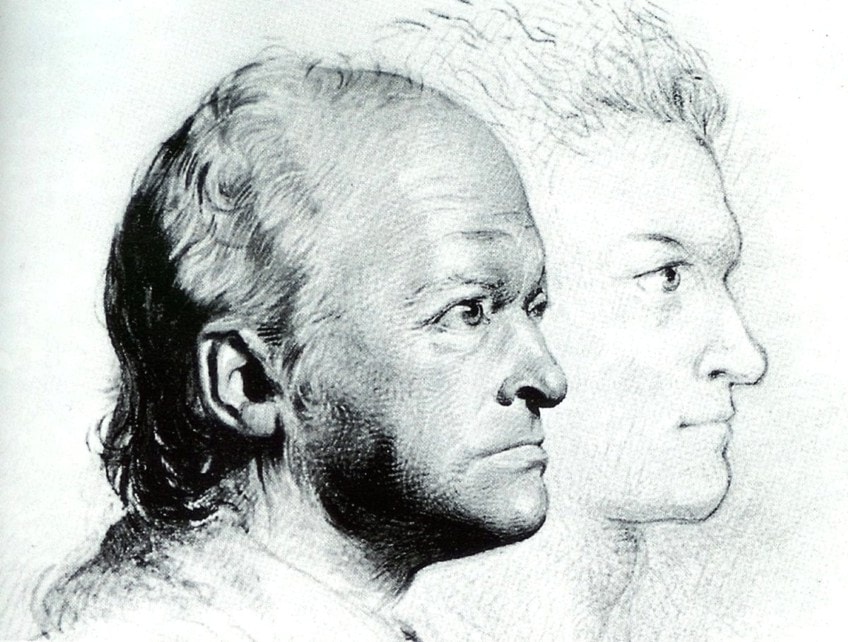
Artistic and Political Influences
Blake’s initial biggest artistic influence was the Master Renaissance era artists such as Raphel and Michelangelo. Many of William Blake’s paintings display his love for their use of form, evidence of the many hours he spent skipping school to try and reproduce the works himself.
Yet, this would not be the only influence on William Blake’s art – his work was often a reaction to the political and social issues of the day.
William Blake’s artworks portrayed his political sentiments on various subjects, such as his hatred of slavery, as is visible in his work, A Negro Hung Alive by the Ribs to the Gallows (1796), which he produced in the hope of shocking potential audiences by exposing them to the harsh truths of the slavery trade.

Blake was also an advocate of women’s autonomy and rights, disturbed by the manner in which many of them were forced into marriages, as is evident in Visions of the Daughters of Albion (1793), where he portrayed women as enslaved by their vows.
Because of his convictions regarding women, he has often been embraced by various movements that applied his use of symbolism in their own works.
He was also seen as an inspirational figure by the free love movement of the 19th century which felt that marriage was a form of slavery and that laws should relaxed when it came to sexual preferences and activities such as homosexuality and prostitution. This movement would eventually culminate in greater personal freedoms for women, especially their sexuality and body autonomy such as the 29th century’s birth control movement.

Of course, one of the biggest influences on William Blake’s illustrations was his nightly hallucinations and ghostly visitations – something that he said he had experienced from a very young age. These religious visions often contained entities that imparted messages that they wanted him to incorporate into his works. He had written accompanying books, which featured a pantheon of his own deities that he then depicted in his artworks. He claimed to not only see angelic visions though, and once said that he had seen Satan standing on the staircase inside of his home.
Fellow Romanticist poet, William Wordsworth, once stated that even though he considered Blake to be an utter madman, he still found his madness far more intriguing than the comparatively sane, yet boring works of writers such as Walter Scott and Lord Byron.
Other writers, such as John William Cousins were more complimentary regarding Blake, stating that he was a loving and humble soul, largely ignored and forgotten, save for a few ardent followers, who despite his lack of wealth, lived a life that was full of imagination and celestial visions.
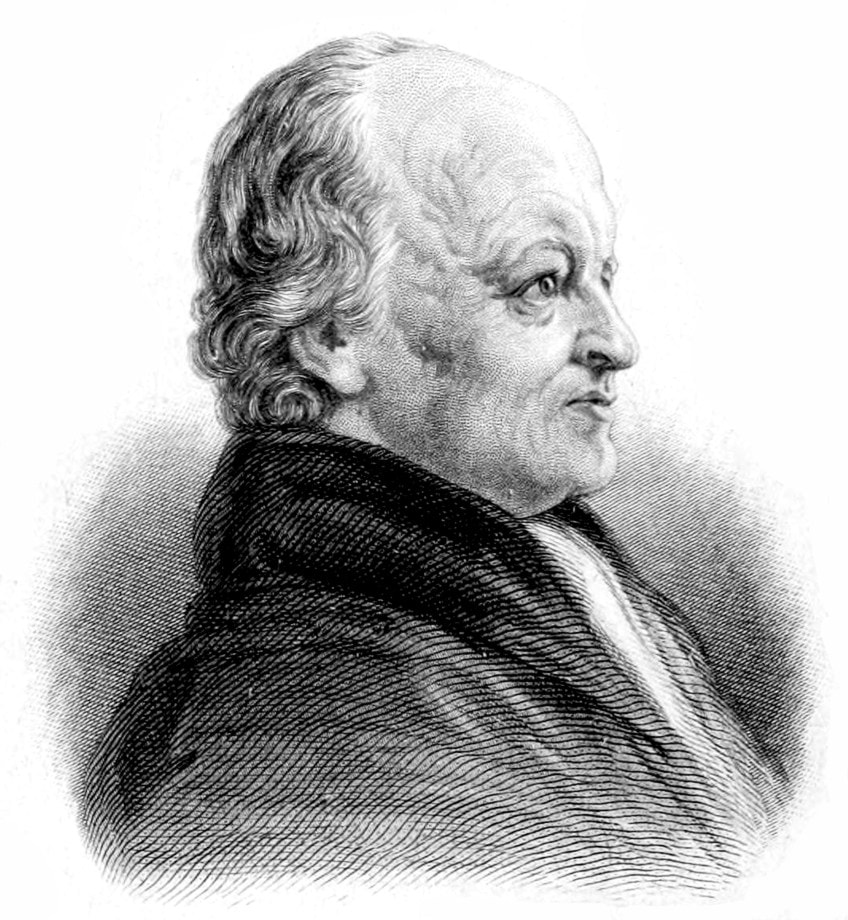
William Blake regarded the art of Classicism to be Pagan in its symbolism and regarded the Bible as the foundation of true art and the most significant poetic work ever written. Blake’s primary patron Thomas Butts commissioned the artist to create various illustrations of the scriptures over a period of 10 years, which mainly concentrated on the depiction of scenes from the Old Testament.
His works not only contained religious symbolism, though, and many psychologists such as June Singer have suggested that they also contained symbolism that was sourced from a subconscious part of the psyche.
They also found parallels between the ideas and thought of Blake and Carl Jung, the renowned psychoanalyst. His artworks and writings seemed to contain many elements of symbolism that were associated with the subconscious, but Jung himself felt that these works were artistic representations of these symbols and not legitimate representations of actual unconscious processes.

Notable Artworks
Although he was largely overlooked in his lifetime, Blake is now highly regarded in both artistic and literary circles. Many have since tried to emulate his works and sought to reach the same levels of inner discovery and outer expression as he had reached. Here are a few of his most important works.
| Artwork | Date | Medium | Location |
| Songs of Innocence and Experience | 1789 | Pen and Watercolor | Various Editions |
| The Ancient Days | 1794 | Watercolor Etching | Private Collection |
| Pity | 1795 | Relief Etching | Metropolitan Museum of Art, New York |
| Isaac Newton | 1795 | Engraving | Tate Museum, United Kingdom |
| The Great Red Dragon and The Woman Clothed in Sun | 1805 | Ink, watercolor on paper | The Brooklyn Museum, New York |
| The Angels Hovering Over the Body of Christ in the Sepulcher | 1805 | Pen, watercolor, on paper | Victoria and Albert Museum, London |
| Parable of the Wise and Foolish Virgins | c. 1826 | Watercolor, pen, over graphite | The Metropolitan Museum of Art, New York |

Recommended Reading
William Blake was considered to be a rather eccentric character in his lifetime. Unfortunately, this meant that his incredible talents were overlooked by most people. However, since then he has emerged as one of the most unique thinkers of his time, despite his odd beliefs about apparitions and angels.
If you would like to find out even more about William Blake’s artworks and lifetime, then why not check out one of these awesome books on the subject?
The Marriage of Heaven and Hell (c. 1790) by William Blake
This publication contains a sequence of texts that closely mimic the style of a traditional book of scriptures, yet features beings that are entirely fictional and created by Blake to represent his own personal beliefs and imaginary mythological pantheon. Although the exact date of the manuscript’s initial release is now unknown, it is believed to have been produced around 1790, a period noted for its conflicts arising from the aftermath of the French Revolution. The story is written from the perspective of someone who visits hell, said to be based on Dante’s Inferno (14th century).
- A series of texts written as biblical prophecy by William Blake
- Expresses Blake's own personal Romantic and revolutionary beliefs
- Inspired by Dantes's "Inferno" and Milton's "Paradise Lost"
William Blake: The Complete Illuminated Books (2011) by William Blake
This manuscript contains Blake’s engravings which contained both his poetry and art. This was made possible through breakthroughs in his engraving process that enabled him to add both images and text to a single engraving. This was known as his “illuminated” works as the text added another level of deeper understanding to the overall design, imparting Blake’s notions through symbolism. It was a study of the dualistic nature of life, spanning subjects such as heaven and hell, good and evil, and the power of the imagination. This book contains all of these illuminated manuscripts, allowing you to experience William Blake’s illustrations and poetry for yourself.
- Blake's "Illuminated Books" beautifully combine text and imagery
- Plates from the William Blake Trust's collection in a single volume
- With transcripts of the texts as well as a scholarly introduction
Delphi Complete Works of William Blake (2012) by William Blake
This series of books is loved for its selection of the finest poets of the literary world. This specific volume focuses on the works of William Blake, presenting all of his works in one publication for the very first time ever. This includes all of William Blake’s artworks and poems in one book and offers excellent formatting for the easy location of the poem you are looking for. It also contains two different biographies written about William Blake’s life, making this the absolute ideal gift for any lover of William Blake in your life.
- The first volume to present William Blake's completed works
- Beautifully illustrated with images relating to Blake's life and works
- Famous poetry collections with excellent formatting of the poems
William Blake’s family recognized his artistic talent at a young age, yet also recognized that he was very different from normal children his age, often saying that he saw and spoke to people that no one else could see. This strange ability would affect the rest of the boy’s life and was a large driving force behind his artwork and literature. Even his fellow Romanticists saw him as an extremely eccentric character who was possibly insane, and whose work was often too outlandish even for their tastes. He would go largely ignored throughout his lifetime, except for a group known as the Ancients who were drawn together by his beliefs and works.
Take a look at our William Blake paintings webstory here!
Frequently Asked Questions
What Did Blake Paint?
William Blake did not want to conform to the traditional styles of the Academy, which he found boring and stifling. Instead, he wanted to reproduce the images he experienced in his visions, even claiming that certain Masters had visited him and imparted knowledge and information which they wanted him to incorporate into his works. He luckily found himself in the fortunate position of being able to paint whatever he wanted after he was employed to paint by one of his biggest patrons John Linnell. Linnell bought many of his pre-existing works, as well as commissioned new pieces. This enabled Blake to create divinely inspired artworks that featured characters that seemed to be straight out of the bible or Greek mythology but were actually beings of his own design, created to represent the various aspects of our own psyches.
What Influenced William Blake’s Paintings?
William Blake considered himself to be a spiritual person, and his artworks were the embodiment of his religious ideas. His earliest influences were the masters such as Michelangelo and Raphael. He would often even go and copy their works instead of attending school. He was also heavily influenced by the political and social issues of his time, promoting women’s rights and the abolition of slavery. These subjects were featured in his works so that his messages were able to reach a larger audience. Despite not being well-received by the vast majority of people, these works were later used by various movements to portray their own struggles.
What Are Illuminated Manuscripts?
Because William Blake was both a writer and artist, he ideally wanted to incorporate both principles into his works of art. These types of manuscripts had been created many years previously but not using copper plate printing technology. Blake managed to find a way to add text to his plates, enabling him to achieve the outcome he desired. He could now tell a complete story by adding a literary narrative to his illustrations, allowing him to incorporate all the various symbols and messages that he had wanted to include previously.
What Style Was William Blake’s Art?
William Blake can be considered a visionary artist, but the movement he is most commonly associated with is Romanticism. Like other Romanticists, he wanted to move away from the academic style of art that relied heavily on precise reproductions of older classical styles and preferred a more emotive and dramatic approach to art. His work was unique, even among other artists of the same movement, and it would be many years before it would be fully appreciated. It would only be many years after his death that Blake truly received the recognition that his followers and supporters felt he deserved, and today he is recognized as a figure that influenced both the worlds of art and literature with his visionary artworks. From the Romanticists through to the Modernists, his style and ideas can still be seen echoed in the works of the creative minds that followed him.
Isabella studied at the University of Cape Town in South Africa and graduated with a Bachelor of Arts majoring in English Literature & Language and Psychology. Throughout her undergraduate years, she took Art History as an additional subject and absolutely loved it. Building on from her art history knowledge that began in high school, art has always been a particular area of fascination for her. From learning about artworks previously unknown to her, or sharpening her existing understanding of specific works, the ability to continue learning within this interesting sphere excites her greatly.
Her focal points of interest in art history encompass profiling specific artists and art movements, as it is these areas where she is able to really dig deep into the rich narrative of the art world. Additionally, she particularly enjoys exploring the different artistic styles of the 20th century, as well as the important impact that female artists have had on the development of art history.
Learn more about Isabella Meyer and the Art in Context Team.
Cite this Article
Isabella, Meyer, “William Blake – Artist William Blake’s Paintings and Illustrations.” Art in Context. September 7, 2022. URL: https://artincontext.org/william-blake/
Meyer, I. (2022, 7 September). William Blake – Artist William Blake’s Paintings and Illustrations. Art in Context. https://artincontext.org/william-blake/
Meyer, Isabella. “William Blake – Artist William Blake’s Paintings and Illustrations.” Art in Context, September 7, 2022. https://artincontext.org/william-blake/.














